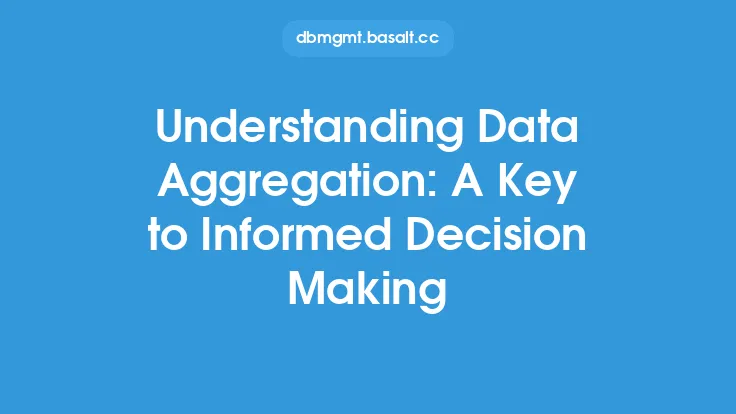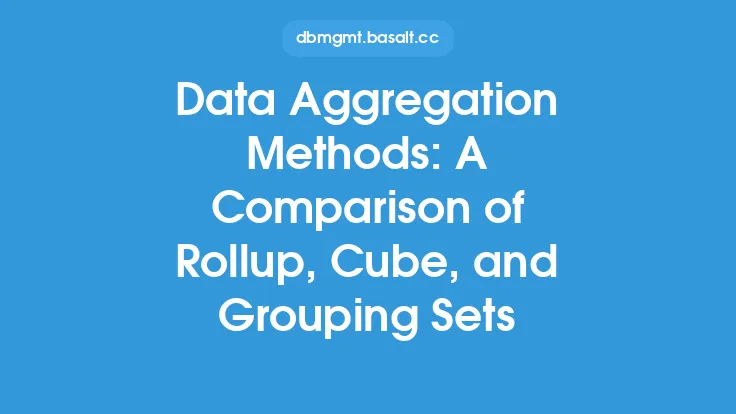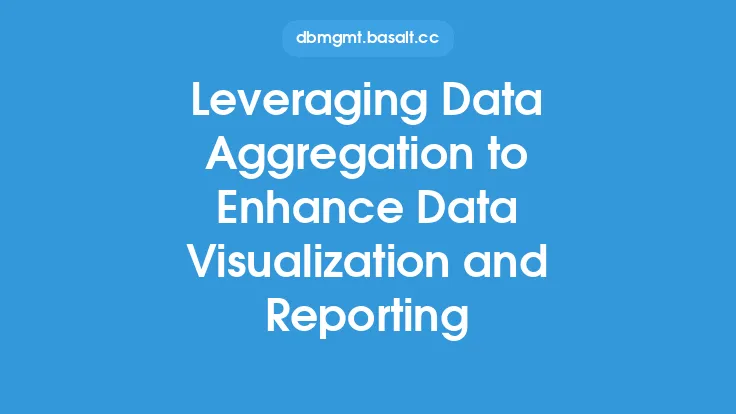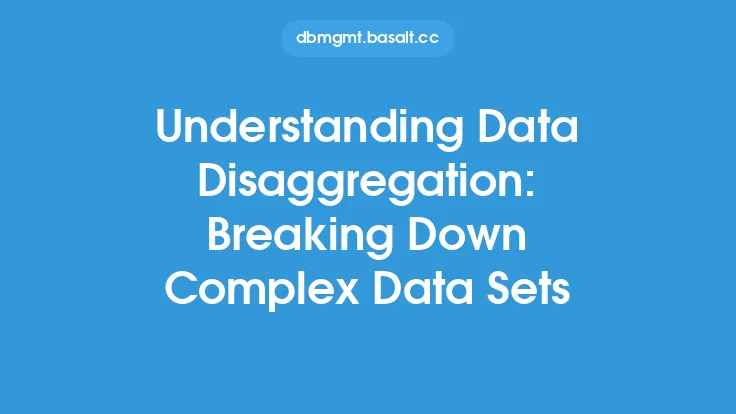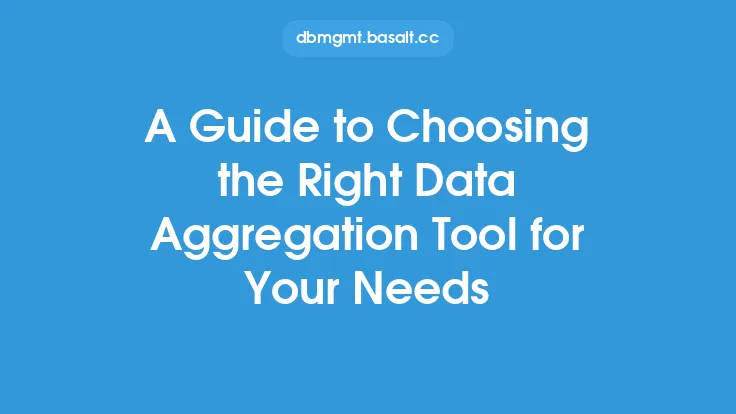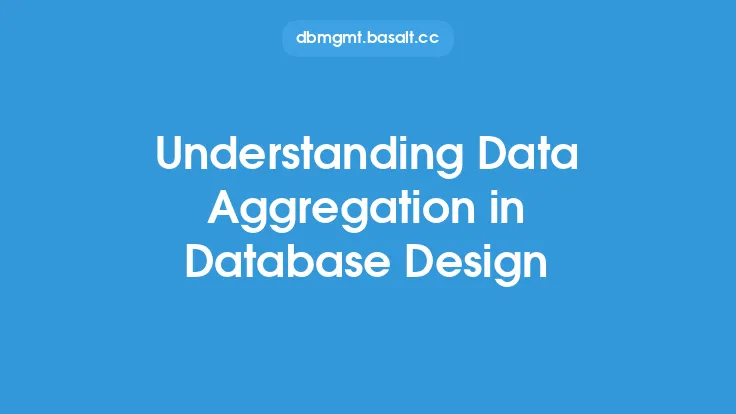Data aggregation is a crucial process in data denormalization that involves collecting and combining data from multiple sources into a single, unified view. This process simplifies complex data sets by reducing the amount of data that needs to be analyzed, making it easier to identify patterns, trends, and correlations. In this article, we will delve into the world of data aggregation, exploring its concepts, techniques, and applications, and providing a comprehensive understanding of how it can be used to simplify complex data sets.
Introduction to Data Aggregation Concepts
Data aggregation concepts are the foundation of the data aggregation process. These concepts include data grouping, data filtering, and data transformation. Data grouping involves categorizing data into groups based on common characteristics, such as date, region, or product category. Data filtering involves selecting specific data elements to include or exclude from the aggregated data set. Data transformation involves converting data from one format to another, such as aggregating numerical data or concatenating text data. Understanding these concepts is essential for effective data aggregation, as they enable data analysts to extract meaningful insights from complex data sets.
Data Aggregation Techniques
There are several data aggregation techniques that can be used to simplify complex data sets. These techniques include roll-up, drill-down, and pivot tables. Roll-up involves aggregating data from a detailed level to a summary level, such as aggregating sales data from individual products to product categories. Drill-down involves aggregating data from a summary level to a detailed level, such as analyzing sales data for a specific product category. Pivot tables involve rotating data to display different perspectives, such as analyzing sales data by region or product category. These techniques enable data analysts to analyze data from different angles, providing a more comprehensive understanding of the data.
Data Aggregation Tools and Technologies
Several data aggregation tools and technologies are available to support the data aggregation process. These tools and technologies include data warehousing, business intelligence software, and data integration platforms. Data warehousing involves storing data in a centralized repository, making it easier to access and analyze. Business intelligence software provides data analysis and reporting capabilities, enabling data analysts to create reports and dashboards. Data integration platforms enable data to be integrated from multiple sources, providing a unified view of the data. These tools and technologies simplify the data aggregation process, enabling data analysts to focus on analyzing and interpreting the data.
Data Aggregation Applications
Data aggregation has numerous applications in various industries, including finance, healthcare, and retail. In finance, data aggregation is used to analyze financial data, such as stock prices and trading volumes. In healthcare, data aggregation is used to analyze patient data, such as medical histories and treatment outcomes. In retail, data aggregation is used to analyze sales data, such as product sales and customer behavior. These applications demonstrate the versatility of data aggregation, highlighting its ability to simplify complex data sets and provide meaningful insights.
Data Aggregation Challenges and Limitations
While data aggregation is a powerful technique for simplifying complex data sets, it also presents several challenges and limitations. These challenges and limitations include data quality issues, data integration challenges, and scalability limitations. Data quality issues, such as missing or inaccurate data, can affect the accuracy of the aggregated data. Data integration challenges, such as integrating data from multiple sources, can be time-consuming and complex. Scalability limitations, such as handling large volumes of data, can affect the performance of the data aggregation process. These challenges and limitations highlight the need for careful planning and execution when implementing data aggregation.
Best Practices for Data Aggregation
To ensure effective data aggregation, several best practices should be followed. These best practices include defining clear goals and objectives, selecting the right data aggregation tools and technologies, and ensuring data quality and integrity. Defining clear goals and objectives enables data analysts to focus on the most important data elements and aggregation techniques. Selecting the right data aggregation tools and technologies enables data analysts to simplify the data aggregation process and improve performance. Ensuring data quality and integrity enables data analysts to trust the accuracy of the aggregated data, providing meaningful insights and supporting informed decision-making.
Conclusion
In conclusion, data aggregation is a powerful technique for simplifying complex data sets, providing meaningful insights and supporting informed decision-making. By understanding data aggregation concepts, techniques, and applications, data analysts can unlock the full potential of their data, driving business success and competitiveness. While data aggregation presents several challenges and limitations, following best practices and selecting the right tools and technologies can ensure effective data aggregation, enabling organizations to make data-driven decisions and drive business growth.
